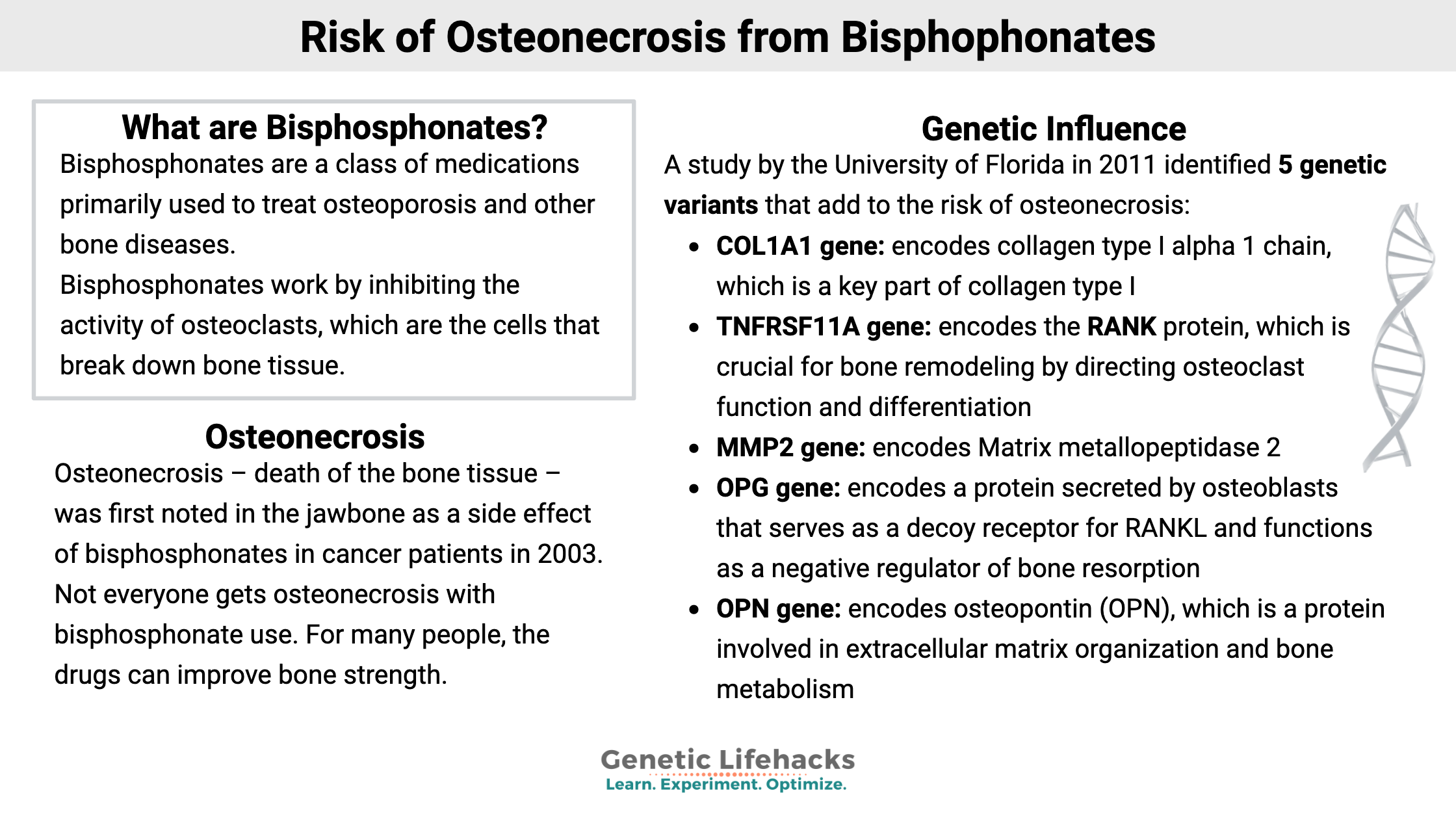Key takeaways:
~ A small percentage of people taking bisphosphonates will experience osteonecrosis – bone death – in the jaw.
~ A number of factors are involved in who is at risk, including genetics. Your doctor can help with evaluating your personal risk.
~ A polygenic risk score involving 5 osteoporosis-related genes can show the genetic component of your risk.
How do bisphosphonates work?
Bisphosphonates are a class of medications primarily used to treat osteoporosis and other bone diseases, such as multiple myeloma, that involve excessive bone loss or abnormal bone remodeling. They are also used in some metastatic cancers.[ref]
Bisphosphonates work by inhibiting the activity of osteoclasts, which are the cells that break down bone tissue. They attach to hydroxyapatite crystals in bone and interfere with the activity of osteoclasts. This prevents them from breaking down bone, leading to increased bone density and a reduced risk of fractures.
Osteonecrosis – death of the bone tissue – was first noted in the jawbone as a side effect of bisphosphonates in cancer patients in 2003. This can then require surgery to remove part of the jawbone. It is a problem with both the first and second-generation bisphosphonate drugs.[ref][ref][ref][ref]
Not everyone gets osteonecrosis with bisphosphonate use. For many people, the drugs can improve bone strength.
A study by the University of Florida in 2011 looked at genetic variants that were likely to play a role in jaw osteonecrosis from bisphosphonates. The study was small (78 participants), but the researchers were able to discover a statistically significant set of genetic variants related to an increased risk of bisphosphonate-induced osteonecrosis of the jaw. They found that a polygenic risk score of >5 was associated with a significantly increased risk of osteonecrosis.[ref]
A polygenic risk score combines the effects of common genetic variants — adding up the small risks to see if the combination of variants increases the odds of a condition occurring.
Genotype report: Polygenic risk score, bisphosphonates
Calculate your score:
The polygenic risk score for osteonecrosis of the jaw was calculated by adding up the risk alleles of the following genetic variants. For a score greater than 5, researchers found a significant increase in risk for osteonecrosis with bisphosphonate use.
Access this content:
An active subscription is required to access this content.
Lifehacks:
Again, please talk with your doctor to determine what course of action is best for your situation. Genetics is only one variable involved in the decision.
Lifestyle and environmental factors that influence osteoporosis risk that you can control include:
- cutting back on alcohol
- never smoking
- get enough calcium in your diet
- exercise regularly
- get vitamin D through supplements or sunshine
- eating a healthy diet that promotes a healthy gut microbiome[ref]
Natural RANKL Inhibitors
Access this content:
An active subscription is required to access this content.
Related articles:
Osteoporosis: Genetic Susceptibility and Prevention Strategies

